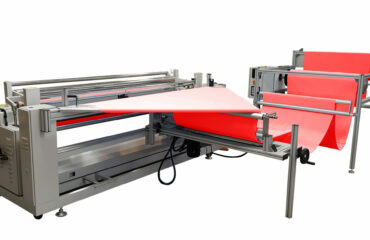The textile industry is undergoing a remarkable transformation, blending biology with cutting-edge machinery to create sustainable and high-performance fabrics. Biotextiles—materials engineered through biological processes—are redefining not just how fabrics are made but also how they function. As demand for sustainability and efficiency rises, advanced textile machinery, such as Svegea of Sweden’s precision cutting solutions, plays a crucial role in making these innovations commercially viable.
Biology Meets Fabric: A New Era in Textile Manufacturing
Traditional textile production is resource-intensive, consuming vast amounts of water, chemicals, and energy. However, biotextiles offer a revolutionary alternative, leveraging natural fibers, microbial cellulose, and protein-based materials to create fabrics that are both biodegradable and high-performing. Researchers have successfully developed microbial cellulose fabrics that decompose naturally, significantly reducing textile waste. Meanwhile, mycelium-based leather and spider silk proteins engineered from microorganisms provide durable, eco-friendly alternatives to conventional materials.
Medical and Performance Applications of Biotextiles
Biotextiles aren’t just shaping sustainable fashion—they’re also transforming healthcare and high-performance textiles. Bacterial cellulose is now used for wound dressings that promote faster healing, while protein-based tissue scaffolds aid regenerative medicine. These bio-engineered fabrics even adapt to environmental stimuli, paving the way for smart medical textiles that interact with the human body.
For these breakthroughs to transition from labs to large-scale manufacturing, precision equipment is critical. The delicate nature of living fabrics and engineered fibers demands cutting technology that preserves their biological integrity without compromising efficiency.
How Svegea’s Precision Machinery Powers the Biotextile Revolution
The production of biotextiles requires more than just innovation—it demands precise and efficient fabric-handling solutions. Svegea of Sweden, a leader in textile machinery, has developed bias-cutting and band-cutting machines that ensure biotextiles maintain their structural integrity throughout processing.
- Precision cutting for delicate materials: Svegea’s circular cutting technology handles biological fabrics with exceptional accuracy, preventing damage and maximizing material efficiency.
- Automation for consistency: Biotextiles require a controlled, repeatable cutting process, which Svegea’s automated bias-cutting machines deliver, ensuring uniformity in every production run.
- Sustainable processing: Svegea’s machinery optimizes material use, reducing textile waste while supporting sustainable textile production—a key objective of biotextile manufacturers.
Sustainability and Market Growth: The Future of Biotextiles
The biotextile industry is experiencing rapid growth, driven by demand for sustainable fashion, medical textiles, and eco-friendly industrial fabrics. Forward-thinking manufacturers are recognizing that advanced cutting technology bridges the gap between biotextile research and large-scale production. Svegea’s Swedish-made, high-precision textile cutting machines are empowering businesses to adopt these innovations seamlessly, ensuring that the future of textiles is not only biological and sustainable but also efficient and commercially viable.
A Partnership Between Innovation and Precision
Biotextiles represent more than just a shift in fabric composition—they mark a new philosophy in textile production, combining nature’s intelligence with human ingenuity. As this industry evolves, the collaboration between biotechnological advancements and cutting-edge machinery will be crucial to scaling these solutions.
To stay ahead in the future of textile production, partner with Svegea of Sweden—where sustainability, precision, and innovation come together. Contact Håkan Steene at h.steene@svegea.se or visit our website to explore cutting-edge textile solutions that support your sustainable production needs.






